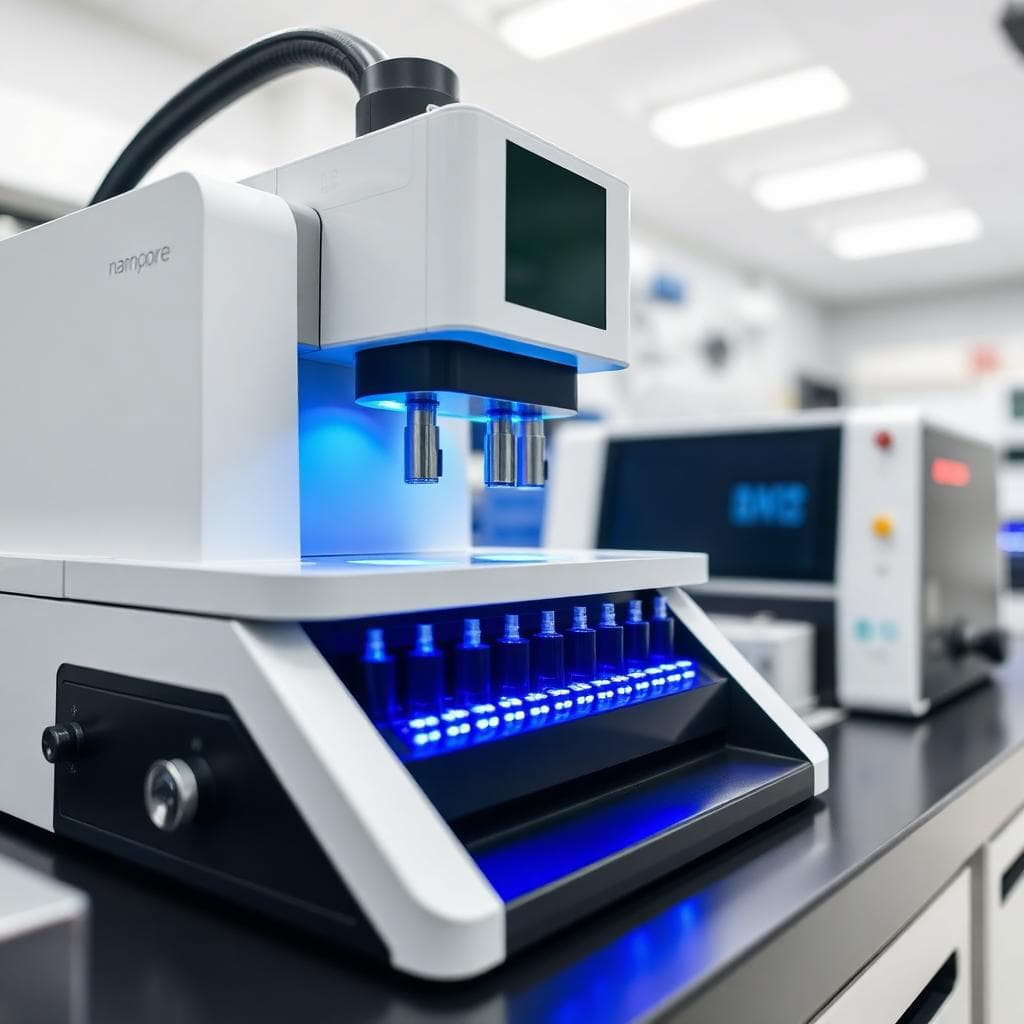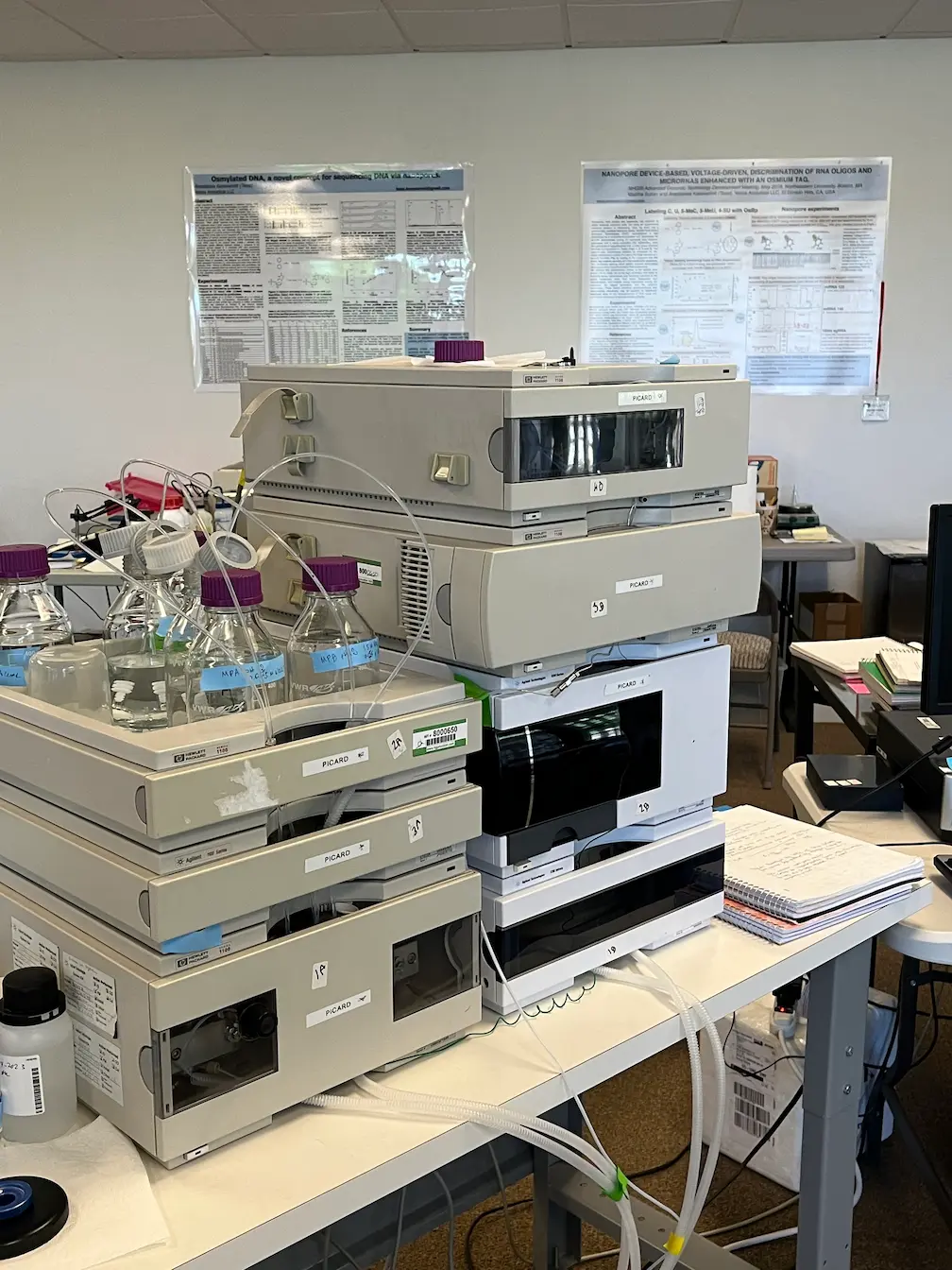MicroRNA-Based Early Cancer Detection
Advanced liquid biopsy technology for non-invasive multi-cancer screening

Our nanopore-based microRNA diagnostic test
The Science Behind the Yenos Test
The Yenos test is based on the groundbreaking discovery of microRNA and its role in post-transcriptional gene regulation—work that was awarded the Nobel Prize in Physiology or Medicine in 2024.
Over the past two decades, more than 2 million peer-reviewed studies have demonstrated that differential expression of specific microRNAs is strongly associated with cancer onset and progression. These molecular biomarkers provide a window into cellular health long before traditional diagnostic methods can detect disease.
The Yenos test leverages this scientific foundation to quantify microRNA signatures in urine samples. This non-invasive approach allows for comfortable, convenient screening while maintaining exceptional diagnostic accuracy.
Our peer-reviewed research demonstrates that healthy individuals share an identical microRNA profile, independent of age, sex, and ethnicity. This "healthy profile" is strikingly distinct from the profiles of individuals with cancer, enabling highly sensitive and specific early detection.

Patented Analytical Platform
Yenos Analytical has developed and patented a proprietary nanopore array-based analytical platform specifically designed for the accurate quantification of microRNAs in liquid biopsies.
This innovative technology enables precise measurement of microRNA concentrations in both blood and urine samples, with sensitivity levels that far exceed traditional PCR-based methods. It is the first commercially available analytical platform capable of accurately measuring absolute copies of single-stranded nucleic acids at the femtomolar level.
The platform's clinical validation demonstrates exceptional performance across multiple cancer types, making it ideal for comprehensive multi-cancer early detection screening.
U.S. Awarded Patents
| Title | Filed Date | Patent No. | Grant Date |
|---|---|---|---|
| Nanopore platform for DNA/RNA oligo detection using an osmium tagged complementary probe | 2020-10-05 | 11,111,527 | 2021-09-07 |
| Nanopore platform for DNA/RNA oligo detection using an osmium tagged complementary probe | 2021-09-03 | 11,427,859 | 2022-08-30 |
| Osmium tagged probes for nucleic acid detection | 2022-08-29 | 11,884,968 | 2024-01-30 |
International Patents Pending
Yenos Analytical has filed international patent protection across key global markets to secure our microRNA analytical breakthroughs.
Pending territories:
- European Union
- Canada
- Australia
- Japan
- Brazil
- India
- China
- Republic of Korea
Key Advantages
Non-Invasive Collection
Simple urine sample—no blood draw required
High Sensitivity
Detects early-stage cancers with over 97% accuracy
High Specificity
Minimizes false positives for reliable results
Multi-Cancer Detection
Screens for multiple cancer types simultaneously
No Prescription Needed
Direct access to proactive cancer screening
Scientifically Validated
Backed by peer-reviewed research and clinical studies
Peer-Reviewed Research & Evidence
Our technology is supported by extensive scientific research and clinical validation studies.
Reference 1
The Nobel Prize in Physiology or Medicine 2024 was awarded jointly to Victor Ambros and Gary Ruvkun "for the discovery of microRNA and its role in post-transcriptional gene regulation"
View publication →Reference 2
miR-21: A non-specific biomarker of all maladies. Review examining microRNA's role across multiple disease states. Biomarker Research, 9, 18 (2021).
View publication →Reference 3
Ready-to-use nanopore platform for the detection of any DNA/RNA oligo at attomole range using an osmium tagged complementary probe. Scientific Reports, 10, 19790 (2020).
View publication →Reference 4
Femtomolar-level PCR-free quantification of microRNA cancer biomarkers in serum (2023); preprint.
View publication →Reference 5
High Sensitivity and Specificity Platform to Validate MicroRNA Biomarkers in Cancer and Human Diseases. Non-Coding RNA, 10(4), 42 (2024).
View publication →Reference 6
The Potential and Limitations of the MinION/Yenos Platform for miRNA-Enabled Early Cancer Detection. International Journal of Molecular Sciences, 26(8), 3822 (2025).
View publication →
Performance of the Yenos Multi-Cancer Test
Clinical validation studies demonstrate that the Yenos urine multi-cancer test achieves over 97% sensitivity and 97% specificity across multiple cancer indications. This high sensitivity and specificity implies that two Yenos tests of the same sample will yield the false result in less than 1 out of 1000 people.
Testing with newly diagnosed Stage I/II cancer patients showed exceptional performance for:
- Prostate cancer
- Colorectal cancer
- Pancreatic cancer
- Ovarian cancer
- Lung cancer
- Breast cancer
These six cancer types represent over 50% of all cancer diagnoses, making the Yenos test a powerful tool for comprehensive cancer screening.
Interested in Learning More?
Contact us to discover how the Yenos test can provide peace of mind through advanced early cancer detection.
Contact Us